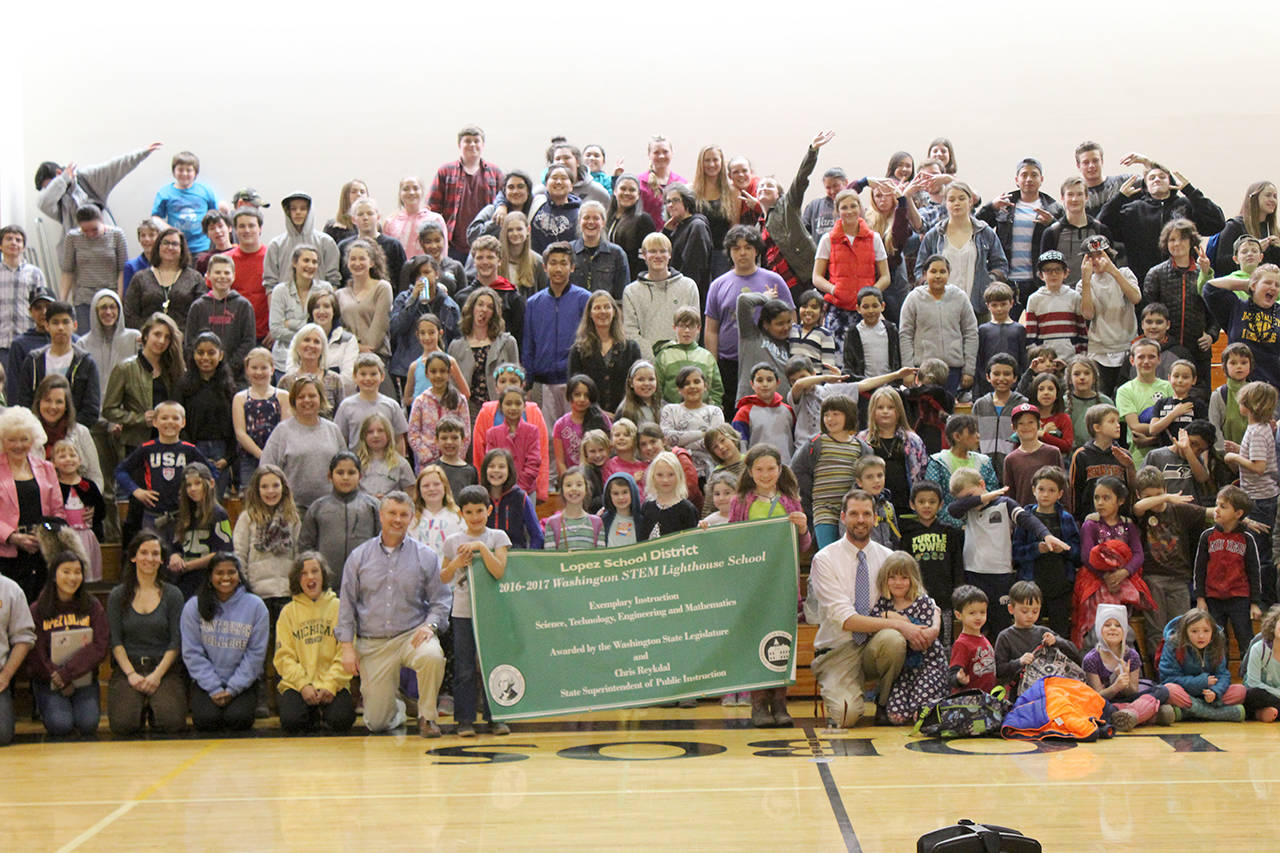For students at the Lopez Island School District it’s just another day, but for educational leaders in Washington state, it was innovative enough for recognition of the STEM Lighthouse grant.
The Office of the Superintendent of Public Instruction (OSPI) awards six schools for their innovative and practical approaches to instruction in Science, Technology, Engineering and Math (STEM). The grant comes with $20,000 that the school can use to further their programs. This year, Lopez Island School District was one among the few.
Lopez was recognized for its numerous partnerships and unparalleled K-12 programs such as the Lopez Island Farm Education (LIFE). Lopez students have teamed together with the solid waste facility and community volunteers in creating filament from recycled milk jugs that can be used on a 3D printer; after-school programs such as Lego VEX Robotics and a BLM elementary science club to classroom discussions and field studies with KWIAHT.
“Our students are engaged in any number of ways, from hands-on experiments to performing an engaging environmental study of Hummel Lake,” said Principal Dave Sather. “It was further proof that Lopez schools are doing more than many other schools. It’s important that our students can express themselves and articulate opinions, but our modern world also demands a higher level of scientific understanding – when both are combined we can tackle the problems of today with solutions that creatively address the human condition.”
Superintendent Brian Auckland added, “we feel fortunate to be receiving this grant from the state which puts the spotlight on one example out of the many big things our little school does on a regular basis.”
Lopez was also cited by OSPI for being the only district in the state with a K-12 engineering program. The Lopez Emerging Engineers Program (LEEP) tackles the engineering standards in the Next Generation Science Standards that other schools are just now scratching the surface of.
The district uses a ‘design thinking’ model, where students design and work together.
“I love to see students excel in science, especially those that struggle in other subjects,” said Lorri Swanson, the science teacher for grades 3–5. “Science requires a different set of skills from students, which requires them to apply critical thinking, process thinking, and reasoning. For students that struggle to read, STEM projects build confidence.”
The addition of the tinker enrichment class to the elementary curriculum is allowing students additional weekly practice with hands-on instruction where they design, build and find solutions in a collaborative manner.
The district looks forward to new opportunities as they begin the rollout and implementation of the tech levy, which was passed last year.




